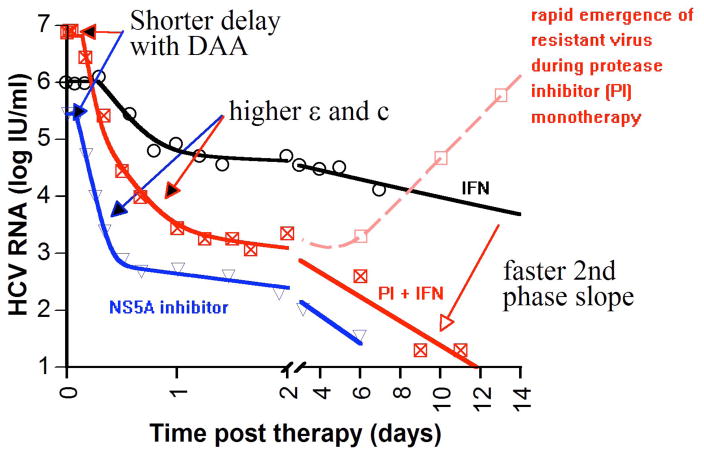Figure 1.
Representative plasma HCV kinetics in treated individuals with daily IFN (circles), PEG-IFN+telaprevir (squares filled with x), telaprevir (empty squares) and BMS-790052 (up side down triangles). Fitting results of the biphasic decline model (Eq.1; solid lines) with these data suggest that some DAA-based treatments, in comparison to IFN-based therapies, lead to shorter delay before HCV RNA declines after initiation of treatment, t0 (e.g., Table 2), enhance viral clearance rate in serum, c [59•], and lead to higher efficacies in blocking viral production/release, ε, and faster 2nd phase slope decline or higher infected cell loss rate, δ (e.g., Table 2) [17, 22••]. The limitations of the biphasic decline model are discussed in the main text and in Table 1.

